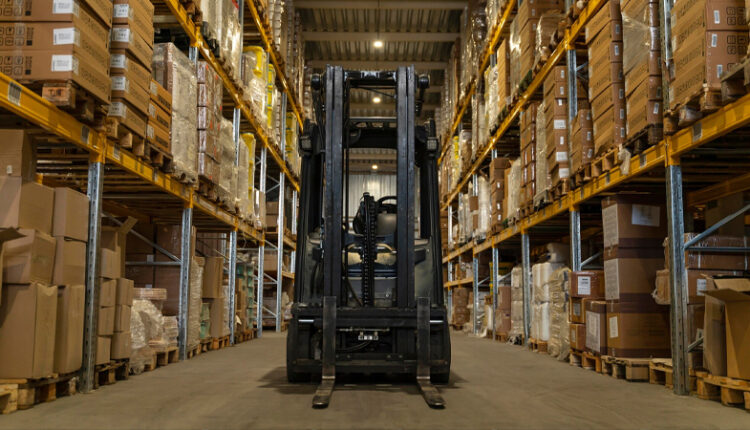Warehousing and Distribution Logistics: The Backbone of Streamlined Supply Chains
In the fast-paced world of commerce, where efficiency is the key to success, one element stands tall as the unsung hero behind the scenes: warehousing and distribution logistics.
Picture this: a vast warehouse with rows of towering shelves overloaded with products, eager to reach designated customers. It’s a symphony of organization and coordination, where each person plays their part flawlessly. In this captivating world, order and chaos unite to create an efficient system, ensuring smooth operations. Let us step into the fascinating world of optimized efficiency.
How Does Warehousing and Distribution Logistics Revolutionize Supply Chains?
Warehousing and distribution logistics refers to the processes and activities involved in logistical settings, such as storage, handling, transportation, and inventory management. It encompasses a range of services, including packaging, stock control, inventory management, and the movement of products from warehouses to distribution centers, wholesalers, retailers, or end consumers.
Warehousing involves the temporary storage of physical inventory, where goods are received, identified, verified, stored, and retrieved as needed. Warehouses serve as facilities for storing goods before they are distributed to their final destinations.
On the other hand, distribution centers are specialized buildings or warehouses that are stocked with products specifically for redistribution. They act as hubs for sorting, consolidating, and redistributing goods to wholesalers, retailers, or customers.
Warehousing and distribution logistics ensure the efficient movement of goods through the supply chain, optimizing inventory management, reducing lead times, and meeting customer demands. It plays a crucial role in facilitating the timely delivery of products, improving operational efficiency, and minimizing costs for businesses involved in the distribution of goods.
Top 5 Trends in Warehousing and Distribution Logistics Transforming Businesses
Warehousing and distribution logistics play a crucial role in supply chain management, as they help businesses optimize their inventory levels, reduce costs, improve customer service, and streamline the movement of goods. Emerging trends are making the whole process simpler and faster than ever. Some of them include:
1. Internet of Things (IoT)
The Internet of Things (IoT) is an emerging technology that helps companies enhance their supply chains. Many firms are employing sensors, a type of IoT, in their vehicles to track the product’s shipment as well as help with route and location supervision. IoT solutions in warehousing and distribution logistics can assist with storage conditions, stock management, and preventive maintenance.
To cite an example, Fleetroot uses an IoT platform to handle its fleets. The platform uses vehicle sensors to monitor vehicle functionality, alert the system, plan fleet maintenance, optimize routes, and provide delivery solutions.
2. Cloud Computing
Cloud computing helps businesses increase or decrease their response to market changes. It has the ability to adopt modern technology faster, despite technology types such as cloud-native or hybrid settings. The main advantage of cloud integration in warehousing and distribution logistics is that it prioritizes analytics over data collection, which increases the visibility of products and related services.
Linker has benefited from cloud computing by building a platform for eCommerce firms, warehouses, and delivery centers, offering third-party logistics services. The platform provides logistics technologies and tools to enhance product labeling and delivery services. Additionally, it is available with a pay-per-use facility.
3. Artificial Intelligence
Artificial intelligence (AI) is drawing massive interest in various industries due to advancements in machine learning, big data analytics, and cloud technologies. AI helps businesses improve operational functionality, address potential problems and risks, and suggest solutions. Companies like Adiona offer AI-based solutions for process optimization and demand forecasting. Adiona improves logistical processes by predicting demand, weather, and traffic.
4. Digital Twins
The digital twin is one of the most favorable technology trends in warehousing and distribution logistics. We know that products look different from their online representations. Digital twin technology is now revolutionizing this aspect. The combination of physical and digital realms has redefined the way we interact with virtual representations of genuine products or components.
For example, Datumix, a U.S.-based startup, uses machine learning to create a 3D simulation of equipment for real-time performance tracking and a warehouse simulation that plans, designs, and manages mobile robots and material handling systems using data from both on-site and off-site sources.
5. Blockchain
Blockchain technology serves as a digital ledger, which enables data sharing across networks without corruption. Companies must collect and organize data effectively. Supply chain partners benefit from developing a blockchain ecosystem for efficient working.
For instance, ShipChain, a logistics technology, uses blockchain for real-time shipping tracking and updates delivery information. Similarly, Steamchain‘s World Trade Logistics system simplifies payment methods with permanent transaction records, preventing fraud and reducing currency fluctuation costs for warehousing and distribution logistics.
In a Nutshell
Warehousing and distribution logistics are vital components of the modern supply chain. It ensures that products are stored, organized, and transported efficiently, allowing businesses to meet customer demands and maintain a competitive edge. The seamless coordination between warehouses, transportation networks, and distribution centers enables the smooth flow of goods from production to consumption. It is the backbone of successful supply chains, facilitating the timely delivery of products to customers worldwide. To thrive in today’s global marketplace, businesses must employ warehousing and distribution logistics to create a streamlined and efficient transfer for their products.


